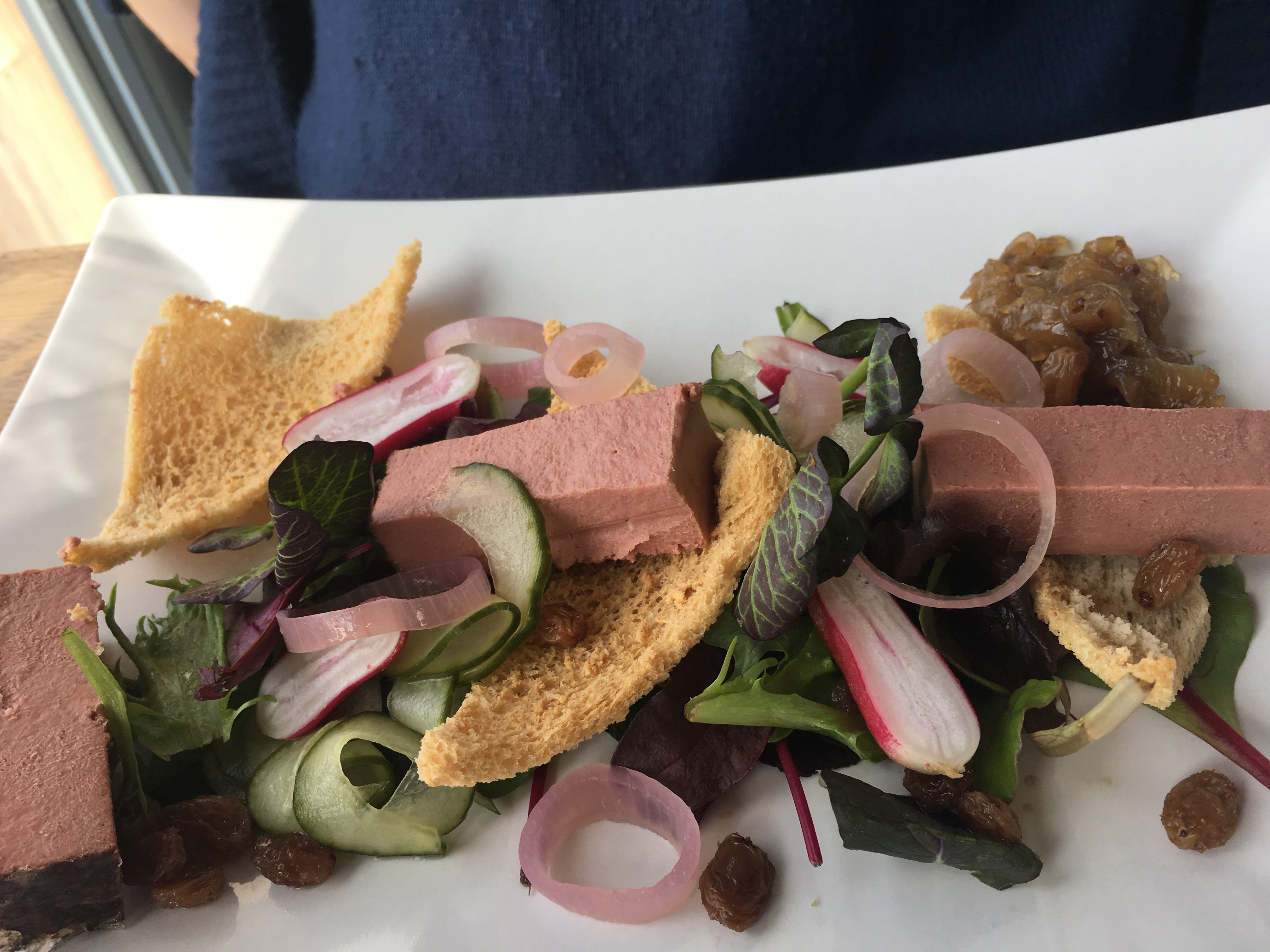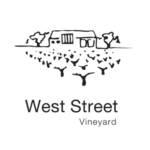Regular readers will know I go out of my way to support independent restaurants that strive for excellence, make a point of sourcing fine local ingredients and give value for money – as opposed to bean-counted chains serving homogenised, commoditised stereotype menus. It’s always a tragedy when such establishments close their doors, such as the once revered, now lamented Compasses at Pattiswick… but then we don’t always support the good places on our own doorstep. Missing them when they are gone is too late.
So it is a point of principle that I support the West Street Vineyard in Coggeshall when I can, primarily since it always serves good food and drink, provides attentive service and has a most pleasing ambience – quite apart from being a working vineyard. Since moving to Tiptree in 2009, I have probably been there a dozen times for breakfast and lunch, and intended for a long time to take my partner there on one of her occasional trips up from London, without quite getting around to it. Since I am still in a plaster cast and had her offer of lunch to get me out of the house, this was the ideal opportunity, and a perfect sunny day to enjoy the glorious views over the vineyard.
Quite apart from the chocolate box idyll that is Coggeshall (a world apart from the cliched view of Essex), there is much to love about this restaurant/cafe/vineyard/wine school, complete with its funky logo. The restaurant is set in a light and airy room with a balcony, plenty of bottles and complemented by delicious quotes about wine adorning the walls. Gentle jazz music pleased even my girlfriend, not a woman known for her love of music, especially while dining. Daffs in bloom on the table tell me this is a management observant of the fine details that separate an production line eatery from a dining experience that sticks in the memory.
This is an establishment more akin to a posh brasserie in the French tradition, offering as it does breakfast, elevenses, lunch, afternoon tea, dinner, wine tastings and everything inbetween. This being lunchtime, we were offered the daily set menu approximately in the “modern British” genre includes a range of appetising dishes, but for those looking at regulation pub grub you can order the likes of fish & chips or burger too.
Talking to the owner, we noted her challenge to keep prices down by mixing up the leanest cuts with cheaper cuts. Very noticeable that ox cheek is following pork belly into the height of fashion, but her menu also included pan-fried lamb breast, a dish that takes me back to childhood and my mother’s thrifty post-rationing boned, stuffed and rolled lamb breast (I suspect this would be a more fine dining version than memories permit.)
Sitting in a sunny corner, we honed in on the set menu, including a glass of what in most establishments would be described as “house white” but is here somewhat more special. In hindsight I wish I’d discussed with the restauranteur/vintner the grape varieties but compared to harsh English wines I’ve sampled before this was a revelation in quality and complexity: a mouthful of tart Granny Smith apples gave way to nutty raisin flavours redolent of a fine muscat.
This proved apt, given that my starter included green apples, along with crumbled goats cheese, pomegranate, sherry vinegar and roasted raddichio, plus another unadvertised leaf looking not unlike oregano. While the crowing glory of this dish was the subtle charring of the goats cheese (I could happily have eaten it all afternoon), the combination worked better than it sounds, possibly because the raddichio had lost in roasting the worst of its bitterness, the sherry vinegar was kept will under control and the sweetness of pomegranate encouraged to flourish.
My other half went for batons of chicken liver parfait served with beer onion jam, pickled shallot, radish, boozy sultanas and Melba toast. Chicken liver parfait is not a starter I commonly choose, largely because it is so often served fridge cold and therefore like eating semifreddo cardboard.
The difference between commercially manufactured smooth chicken liver pate and that made freshly from quality ingredients truly is chalk and cheese: one is a delightfully light starter with depth of flavour and the other is fit only for cementing ceiling tiles. This example was well-made, cool but not cold, and was well served by its accompaniments, thereby comfortably in the delight category and much the better for it.
For mains, she chose the fish dish of the day, which as I recall included cod with a Parmesan crumb, crisp fried chorizo, a crispy soft-cooked hen’s egg in the style of a scotch egg minus sausagement, and a butternut squash risotto. The fish looked beautiful, the chorizo added savoury goodness to the sweetness of fish and squash, though it was the risotto that dominated a huge plateful. It was tasty but suffered the same fate as almost every restaurant and commercial risotto: it was overcooked, for a well-documented reason.
Risotto rice must be al dente to be experienced at its best – the ‘bite’ makes all the difference. In the kitchen, this a fine art requiring a practised eye – after being taken from the hob it continues to cook, therefore must be served without delay or risks becoming a mush. However, for a restaurant to serve risotto without undue waiting time means cooking in advance, which to me makes risotti risky dishes to serve. This was far from the worst example I’ve ever tasted but certainly would have benefitted from being cooked freshly. Perhaps it might have worked better to pair the fine fish with a dish less time critical?
To its credit, my partner asked for a doggy bag to carry the leftovers and was instead given a beautifully constructed carry bag made from foil. Britain has not yet succumbed to American carry-home culture, nor indeed mega portions designed to feed the 5,000, so this was probably an unusual request.
I chose a colourful platter of pork three ways. If that does not sound colourful, consider that the dish came with irridescently green curly kale, an ellipsis of beetroot-coloured mash (very subtle in beetroot flavour), and a splatter (literally) of carrot juice across the ample white spaces of a dish presented in the modern minimalist fashion. It was advertised as including quince jelly, which I did not spot. In truth, I could have used some to help alleviate what was a slightly dry overall effect.
Serving pork three ways is a mixed blessing, since inevitably one will work brilliantly and one less so: the pork belly was divine – moist, tender and with a hint of crunch on top; a crunchy-fried pork rissole was good but lacked the moisture that would have made it even more moreish; and medallions of pork fillet coated in crisp air-dried ham were a good effort but are subject to fine judgement.
Traditionally, our view of pork is that it must be cooked through, for the very good reason that tapeworms could spread via uncooked pork. Modern hygiene regulations make that an unlikely scenario, but still we are cautious about serving pork as pink as we would beef or lamb. I could allow some discretion, but there are limits: one of my medallions was perfect, but the other was not just pink – it was raw in the centre, once turned over. The waitress proved very helpful and arranged for two replacement medallions without charge, each of which were perfect – the ham coating a joy to behold. I think we left with the restaurant having learned a lesson by discussing with customers how well they like their pork cooked in future.
We were going to share a dessert but the risotto effect left my girlfriend full. She made do with a very fluffy cappuccino topped with proper bitter chocolate shavings, a distinct improvement on cocoa powder. I had a black Americano topped with a glorious crema (look it up), but could not resist rice pudding served with a spiced fruit compote – possibly a subconscious reminder of my attraction to risotti. The rice pud was warm, slightly but not excessively sweet, and the berry compote redolent of nutmeg, cinnamon and a hint of allspice.
Now here’s the rub: just as winemaking is, done well, a human process, so is cooking. I love the fact that there are mistakes made, because that proves just what a human process it is. You may get the occasional blip, but what you also get are highs no amount of manufacturing can ever offer. West Street Vineyard is not perfect, but what it does it does well for a fair price, despite steeply-rising costs as we head for Brexit.
The food, drinks and service all demonstrate thought, care and love, which to my way of thinking are priceless commodities we should cherish. Rather than condemning them for getting a couple of things wrong, I will happily return (preferably for a wine-tasting event!) because I know they will work to improve and do better next time. How often can you say that of chains? Never, in my experience.
Well done, WSV. I hope you will take this commentary as constructive and complimentary. I wish them every success!





















